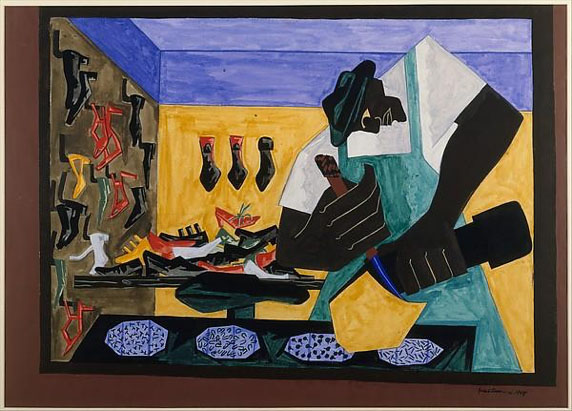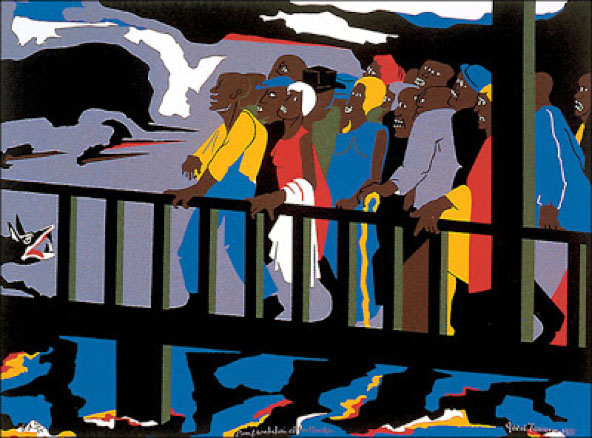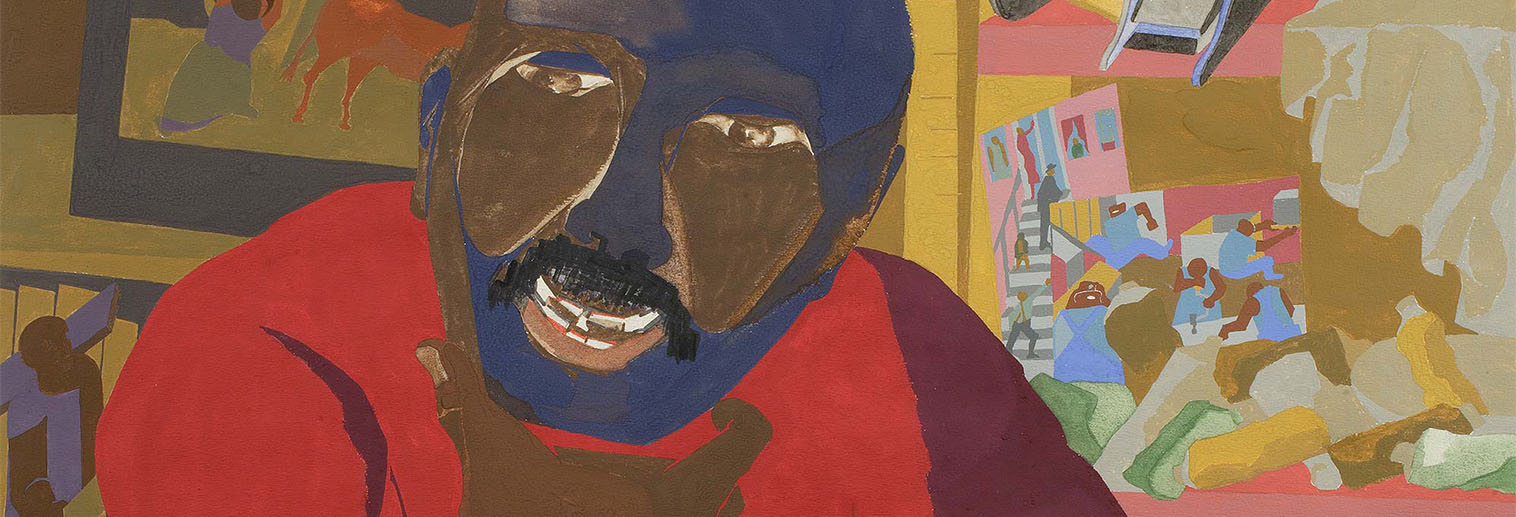Portraits of America: The Paintings of Jacob Lawrence
by Sara Weidner ‘18
On Tuesday, February 23, 2016, art students Nicholas Nejad ‘18 and Chris Soika ’18 presented the work of world-renowned artist Jacob Lawrence (1917-2000) to a Moravian University audience in conjunction with Black History Month, highlighting the significance of Lawrence’s art in influencing the civil rights movement and increasing global and intercultural awareness.
The works of Lawrence were chosen specifically for their uniqueness and abstract quality, which is characteristic of African art. “One reason to study Lawrence is that he is able to show, with abstract art, a history that many people would not have experienced due to generational gaps,” says Soika. “When he does this, he makes the civil rights movement and the struggles of African Americans larger than life, more engaging and easier to understand when compared with history books or people discussing the events post facto.”
Specifically, Nejad presented Lawrence’s painting “The Shoemaker” (1945), which emphasizes the blue-collar working man during the Harlem Renaissance. Its purpose was to defy the racial stereotypes that African American men were lazy and uncreative.

Soika presented the piece “Confrontation on the Bridge,” painted in 1975. It was inspired by the march of civil rights activists across the bridge from Selma to Montgomery and depicts their suffering in order to gain their rights. Its vibrant colors set against a “background of abstract mush” truly represents the struggle and determination of a marginalized community.

The works of Jacob Lawrence vibrantly portray the genuine obstacles and conflicts African Americans have faced over the years and the fortitude they’ve shown in the face of discrimination. “The discussion brought forth many interesting perspectives on the art and for some, including myself, a better understanding of the civil rights movement and African American struggles,” says Soika. It was an example of how art can increase our awareness, understanding and empathy for those brave men and women who revolutionized social justice and civil rights.

